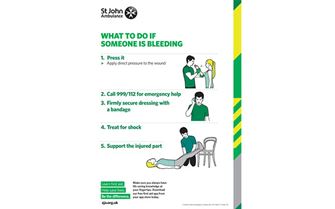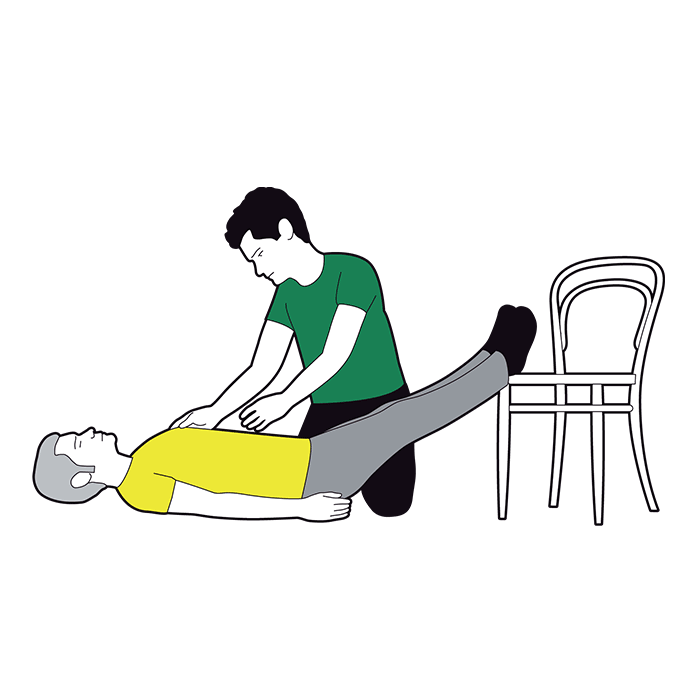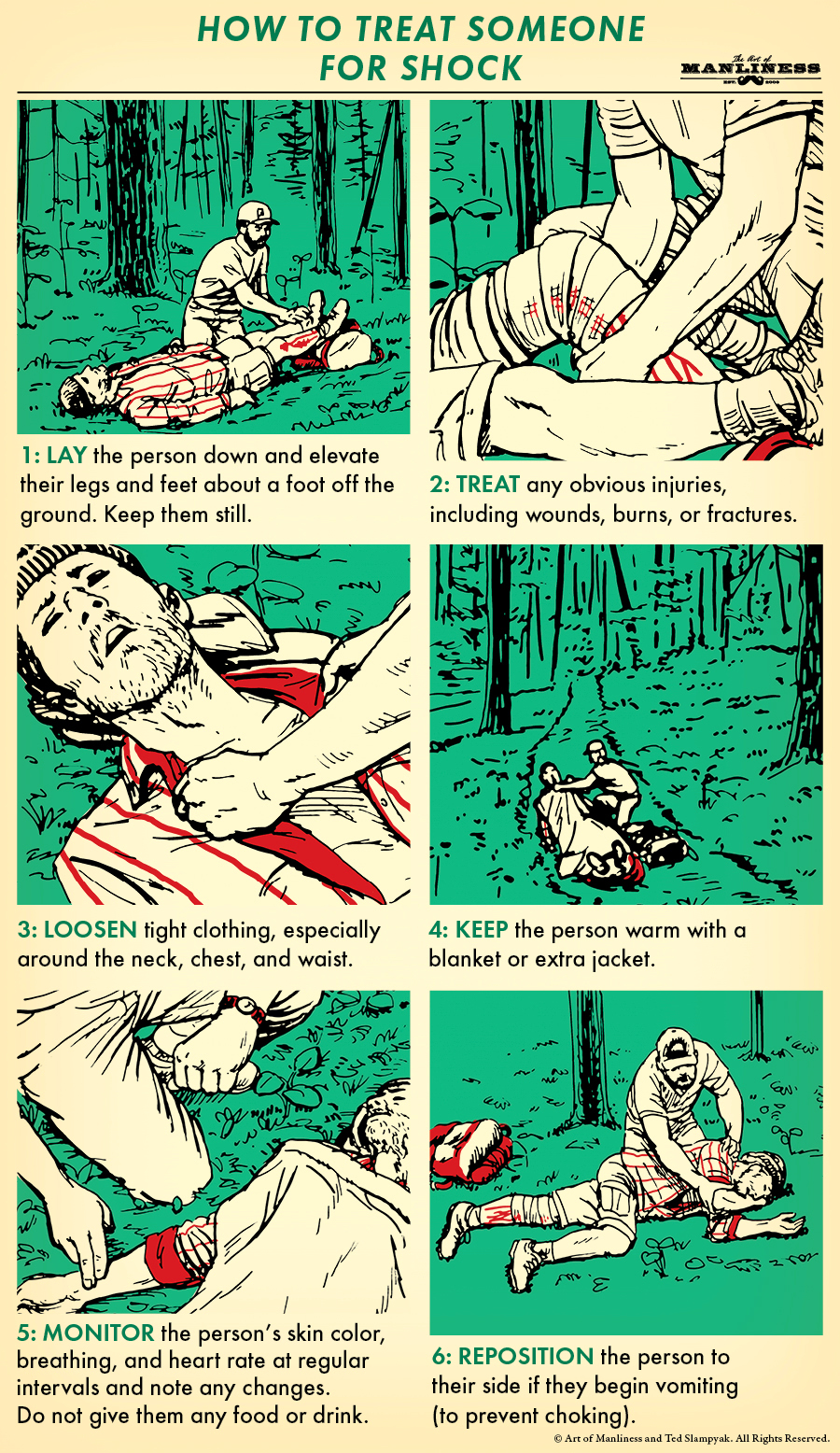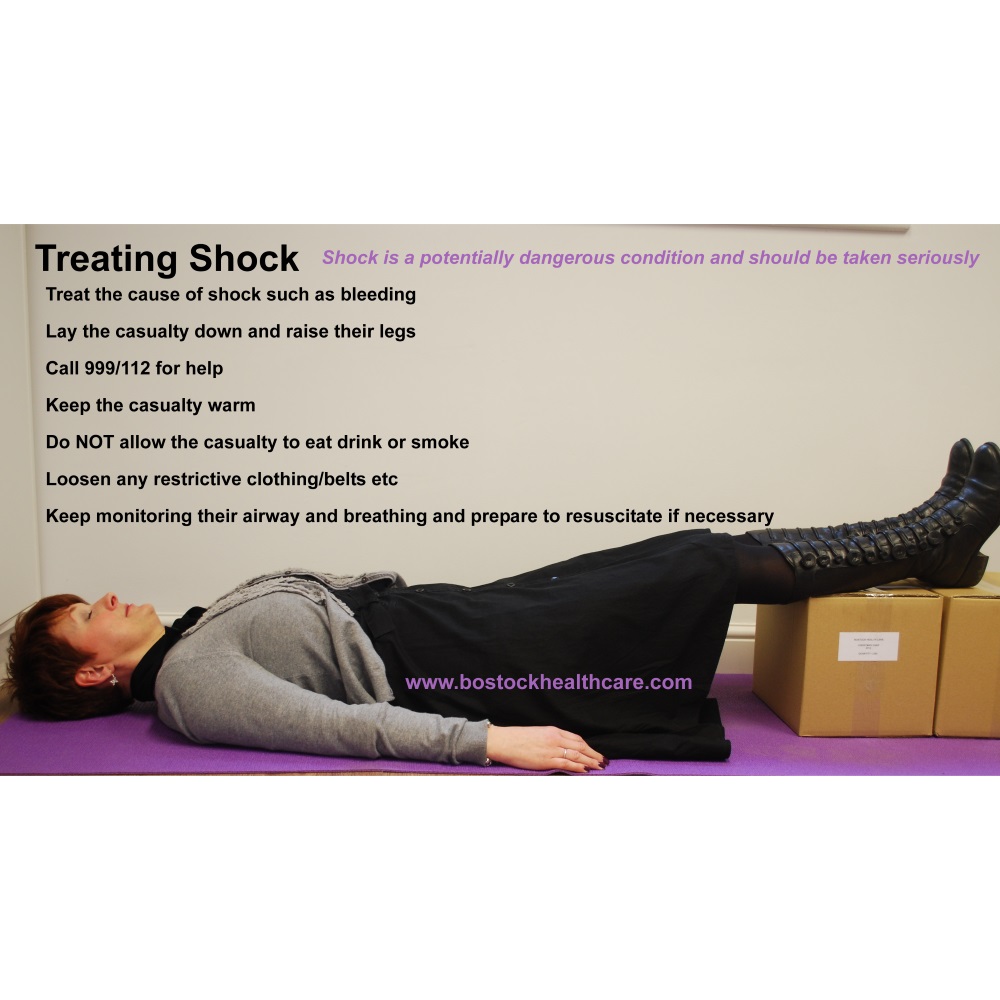how to treat shock
Psychological shock is when you experience a surge of strong emotions and a corresponding physical reaction in response to a typically unexpected stressful event. This is done either in the emergency room or the ambulance and is.

Shock Symptoms First Aid Advice St John Ambulance
The trainer explains the causes of shock the signs.

. Then help the casualty to lie down. Youll receive medications and fluid through an IV line in your arm. In severe cases the person may need a blood transfusion.
Shock prevention includes learning ways to prevent heart disease injuries dehydration and other causes of shock. Lay the person down and elevate the legs and feet slightly unless you think this may cause pain or further injury. This allows blood from the legs to flow back up into the core where all the vital organs are.
Hypovolaemic shock stopping the bleeding and boosting the persons blood volume with intravenous fluids fluids given directly into the persons bloodstream through a tube and needle. Antibiotics to treat septic shock. If the victims level of consciousness decreases activate EMS immediately.
Neurogenic shock is the most difficult to treat as spinal cord damage is often irreversible. Anaphylaxis is the result of the immune system overreacting to a trigger. Attempt to treat the cause of their shock for example treat any bleeding.
How to Treat Shock. Treatment of Obstructive Shock Obstructive shock occurs when an obstruction to the forward flow of blood exists in the great vessels or heart Significant causes are pericardial tamponade massive pulmonary embolism and tension pneumothorax Initial management should focus on increasing vascular. Treatment will be different depending on the type of shock.
Begin CPR if the person shows no signs of life such as not breathing. Crystalloids consist of salts minerals and other water-soluble compounds. For example a person with diabetes may have some form of medical ID tag bracelet or necklace identifying this condition.
Keep the person still and dont move him or her unless necessary. Then immediately take the following steps. Generally administering large amounts of fluids is done to raise the blood pressure fluid resuscitation with an IV.
The person in hypovolemic shock often is thirsty but. Most people who have cardiogenic shock need extra oxygen. And list whom to call for help.
Try to keep the victim as calm as possible as increased stress can make the situation worse. Treatment of shock Specific treatment depends on the type of shock but could include. If bleeding is severe the doctor may recommend a blood transfusion.
The idea is to stabilize the patient as much as you can with broad-based treatment and then target your therapies based on what is specifically happening with the patient. Monitor their vitals often and reassure them that help is on the way. The treatment for all shock states is generally the same with a few differences relative to the shock classification.
Simply place the victim in the Shock Position which is lying the victim down and elevating their feet 6 inches for children and 12 inches for adults. Try to loosen any clothing particularly around the persons neck chest and waist in order to encourage blood flow. If necessary youll be connected to a breathing machine ventilator.
Always assist your victims into a comfortable position either sitting or lying down. Blood transfusion to replace lost blood and treat hypovolemic shock. Management and Treatment How is neurogenic shock treated.
While you wait for emergency services to arrive use the above tips to get a handle on the situation. Raise the casualtys legs supporting them on a chair as this will help to improve the blood supply to their vital organs. Cardiogenic shock treatment focuses on reducing the damage from lack of oxygen to your heart muscle and other organs.
Anaphylactic shock also known as anaphylaxis is a severe and life-threatening reaction to a trigger. If you suspect someone is going into shock call 911 as soon as possible and be prepared to initiate CPR if the person becomes unresponsive or loses consciousness. If possible make it clear as to the reason that the person is suffering from shock.
A St John Ambulance trainer demonstrates how to treat shock not to be confused with emotional shock. If the victim vomits roll the victim to one side and sweep the vomit from his or her mouth with your fingers. First your provider will treat your low blood pressure with fluids you receive through.
First treat any cause of shock that you can see or that you have identified from the primary survey such as severe bleeding. Common triggers are allergic reactions to some foods such as nuts milk shellfish and eggs as well as medicines and insect stings. Immobilization anti-inflammatories such as steroids and surgery are the main treatments.
The subject of intravenous therapy for hypovolemic shock has been widely debated and clinics are still deciding on the use of solutions like crystalloids and colloids as treatments for hypovolemic shock. Do not give the victim any fluids by mouth as this may simply result in vomiting. By thoroughly understanding.
Medications heart surgery or other interventions to treat cardiogenic shock. Your provider will put a collar or neck brace on your neck to keep your injury from getting worse.

How To Treat An Eletric Shock Sign

How To Treat Shock With Pictures Wikihow

Shock Symptoms First Aid Advice St John Ambulance

Shock Symptoms First Aid Advice St John Ambulance

How To Treat Someone For Shock The Art Of Manliness

How To Treat Shock First Aid Training St John Ambulance Youtube


0 Response to "how to treat shock"
Post a Comment